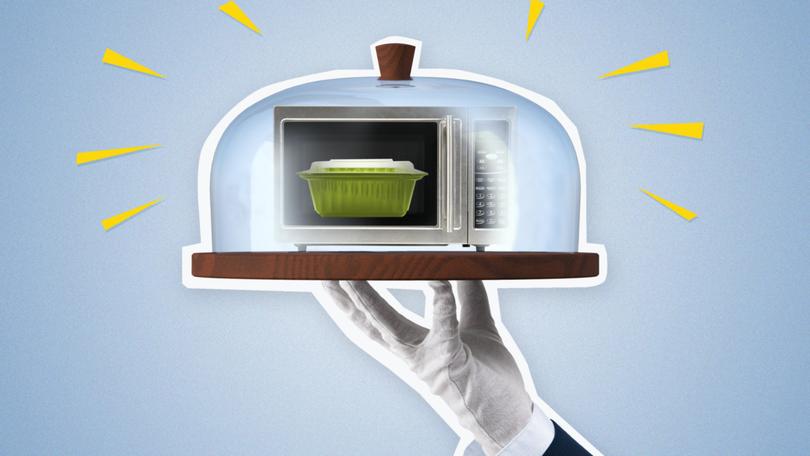Sales of ready meals rise as increasingly time poor shoppers turn to pre-prepared fare

A rising number of Australians are turning to the refrigerator section of supermarkets at lunch and dinner time and choosing ready meals over preparing their own nosh.
Its no surprise given consumers are increasingly time poor and overworked. And ready meals have evolved from the days of frozen seafood mornay and sad microwaveable dinners eaten off trays in front of televisions.
The hungry and time-poor can now choose from a variety of ready-to-eat options including low calorie, low carbohydrate, high protein, vegetarian, vegan, gluten free and keto.
Sign up to The Nightly's newsletters.
Get the first look at the digital newspaper, curated daily stories and breaking headlines delivered to your inbox.
By continuing you agree to our Terms and Privacy Policy.Woolworths has recorded double digit growth in the sales of its prepared meals, with the family sized 2kg beef lasagne the most popular amongst shoppers.
MyMuscleChef, nutrition-conscious microwaveable single meals sold by Woolworths, is also popular with time-poor customers.
Meanwhile sales of “convenient food solutions” have increased by 50 per cent at Coles over the past three years with a survey by the supermarket finding that nearly eight out of 10 shoppers decide what they are going to eat within a day of consumption.
Sunrise resident nutritionist Sarah Di Lorenzo said not all ready meals were the same and advised shoppers to have a good look at labels to check for additives, preservatives, sweeteners and sodium.
As well, Ms Di Lorenzo said some ready meals just didn’t taste that good.
“I have seen some of those TV dinners and the meat looks like a thong,” she said.
University of Wollongong food historian Lauren Samuelsson said ready meals started to take off in Australia in the 1970s as an increasing number of women entered the workforce and spent less time in the kitchen.
Ms Samuelsson said pre-prepared meals had evolved since the days of over-processed and high sodium television dinners and now came in healthy portion-controlled varieties designed to meet various nutritional needs.
“Millennials and Generation Z in the workforce are working long hours and quite hard,” she said.
“It’s an easy option and it’s often cheaper for people living alone.”
Analyst IBISWORLD has forecast revenue from the prepared meals production industry will increase annually by 1.3 per cent over the next five-years to $1.7 billion, a figure driven by time-poor consumers seeking to reduce meal preparation time.
Australian-owned meal delivery service Lite n’ Easy has the lion’s share of the market with 27.4 per cent followed by McCain Foods, 21.4 per cent, My Muscle Chef, 13.5 per cent and Vesco Foods, 13.2 per cent.
Lite n’ Easy dietitian Ashleigh Jones said increasingly busy people didn’t want to spend their time stuck in a kitchen and said consumers were increasingly demanding healthier options including calorie-controlled and high-protein meals.
“Something else that isn’t talked about is the vegetable content, I know it’s not sexy but vegetables are really important,” she said.
“I don’t think there is a limit as long as people choose healthy and balanced meals.”
Meal kit delivery service HelloFresh merged with ready meal brand Youfoodz in 2021 and research commissioned by the convenience double threat found more than four out of 10 Australians were having dinner between 7pm and 10pm each day.
The proportion of late eaters was highest in NSW, 48 per cent, following by Victorians, 45 per cent, and Queenslanders, 40 per cent.
HelloFresh chief executive officer Tom Rutledge also said the rise of pre-prepared meals was largely due to people becoming increasingly time poor and under increasing pressure while the meal kits also offered a price consistency valued in a cost of living crisis.
“It’s helpful from a budgeting perspective but it also has that element of fun and discovery and rallying around the kitchen bench on Wednesday,” he said.
“Though people are being more careful with how they spend their money, you don’t want everything to become completely utilitarian and joyless.”
HelloFresh has not increased prices since 2022 and research commissioned by the meal kit service earlier this year found a quarter of Australians were spending up to $50 over their weekly budget at the supermarket each week amid rising inflation.

